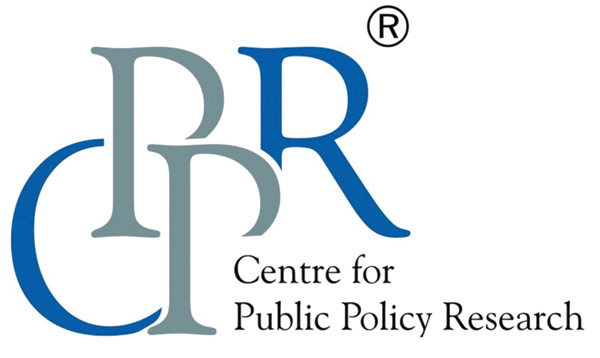Articles
Bleeding PSUs: Why It’s Time To Retire Kerala’s White Elephants

“It would be better if we paint the elephants white” commented veteran leader M V Raghavan on the state emblem during an assembly discussion in 1987. His remarks were on the basis of the report submitted by the Comptroller and Auditor General (CAG) on the state public sector enterprises for the year 1984-85. As per the said report, 85 PSU’s in the state had an accumulated loss of Rs 130 crore1.
Three decades have passed, yet each successive government are still struggling to turn PSU’s in the state into profitable units. “Public Sector Units (PSU’s) in the state will be revived and they will be turned into profitable units” pledged LDF in their manifesto. In line with this an action plan to revive the sick PSU’s in the state was put forward by the incumbent LDF government. As per the new plan, the government plans to rope in the cooperative sectors and NRI’s for funding PSU’s2. This clearly shows the fact the Government is finding it difficult to sustain the sick units in the state.
PERFORMANCE OF STATE PSUs (2014-15)
|
Total investment (as on March, 2015) |
Rs 40556.65 |
|
No: of profit earning enterprises |
44 |
|
Total amount of profits |
Rs 700.96 |
|
No: of loss making enterprises |
46 |
|
Total amount of loss |
Rs 2731.01 |
|
Contribution to state exchequer (taxes & duties) |
Rs 8610.05 |
|
Total accumulated loss (as on March, 2015) |
Rs 11757.58 |
Source: Bureau of Public Enterprises Review for 2014-15 * Rs in crore
The above statistics explains that the cost of maintaining the PSU’s in the state outweighs the benefits accruing from it. As per the report of Bureau of Public Enterprises (2016), the top five loss making units includes Kerala State Electricity Board (KSEB), Kerala State Road Corporation (KSRTC), Kerala Water Authority, Kerala State Civil Supplies Corporation, Transformers and Electricals Kerala Limited. The cost of maintaining the large number of loss making units in the state is bringing a heavy burden on the state exchequer.
Take the case of KSRTC, the accumulated loss of KSRTC amounts to Rs 4217 crore. The contribution of KSRTC to the state exchequer in terms of Sales tax/State VAT stands at Rs 78 lakh, making it only a meagre 0.00015 percent of our GSDP. In 2014-15, total expenditure of KSRTC amounts to Rs 2650 crore3, with salary expenditure claiming around 46 percent of the total expenditure. The heavy spending on KSRTC comes at a time when the share of KSRTC in passenger transport operation comes at 11 % compared to 89 % of private buses.
The below table shows the amount spent by KSRTC on salary account:
NUMBER OF EMPLOYEES- KSRTC (As on 31st March, 2015)
|
Employment |
No: |
Average emolument per person (Rs per month) |
|
Board level employee |
1 |
1,92,500 |
|
Managerial Staff |
217 |
55000 |
|
Supervisory Staff |
1179 |
37465 |
|
Workers/Staff |
33566 |
18131 |
|
Other (Casual/Contract) |
11732 |
7311 |
Source: Bureau of Public Enterprises Review for 2014-15
When the Government is finding it difficult to maintain its road transport corporation, idea to start an airline company is mooted in Kerala. In the recent budget, an amount of Rs 10 crore was allocated for the same. This is the trend that is discernible in Kerala, even if the existing PSU’s are bringing heavy loss to the exchequer, more number of PSU’s will be started by the political party that comes to power. Adding more number of PSU’s to its pockets, can only help to augment the pressure on the state exchequer.
If we analyse the arenas in which the PSU’s in the state are functioning we get an interesting result. For example, we have Kerala Automobiles Limited (KAL) which is engaged in the production of three wheelers. In 2014-15, Government has spent around 15 crores on KAL. But when the contribution of KAL to the state exchequer for the year 2014-15 is taken into account, the number stands at a scanty 1.34 lakh. The accumulated loss of KAL amounts to Rs 53 core4. In fact, it is very difficult to find a three wheeler under the brand name ‘KAL’ in the streets. The above figures clearly show that KAL is not having a smooth ride in Kerala.
When there are players already in the market to provide these goods, why the government should expand its operations to these fields? We have the case of Kerala Scooters Limited, Astral Watches Limited, Kerala State Detergents and Chemicals limited that were closed as they were not able to withstand the competition in the market. It clearly shows that the Government doesn’t have the merit and expertise to perform these activities. It is high time that the Government should ready itself for withdrawal from such engagements.
Even though Kerala is the state having the largest number of state run PSU’s, it is also known as the state having highest level of unemployment rate. It confirms the fact that starting more number of PSU’s is not the solution for the unemployment problem faced by Kerala. Still, the successive governments in the state are starting more number of PSU’s in the state. For instance, 8 new PSU’s were started during the year 2013-14. When the budgetary allocation to the state run PSU’s is taken into account, an increasing trend is visible. In the latest budget around Rs 900 crore is set apart for the PSU’s under the revenue expenditure. The huge allocation to PSU’s comes at a time when the Government is finding it difficult bridge the gap between total revenue and total expenditure. The fiscal deficit of the state stands Rs 17715.07 crore for the fiscal year 2015-16, compared to Rs 3878 crore in 2001-02. Thus the total accumulated loss of the PSUs makes it 66 percent of the fiscal deficit of the state. In order to cover up its growing fiscal deficit, the successive Governments in the state resort to borrowing that lead to an out of control growth in the total debt of the state. As per the recent budget the total debt amounts to Rs 154058 crore. If situation like this prevails for a longer period, the fiscal health of the state will be in danger.
The crisis in early 1990’s forced the Central Government to find new avenues for raising additional resources. The poor performance of the PSU’s and the huge level of fiscal deficit forced the Union Government to formulate its first disinvestment policy. The budgetary support to the loss making PSU’s has only enlarged the fiscal deficit of the Union Government. The same is the case in Kerala, the increasing number loss making PSU’s is bringing pressure to the state exchequer, evident from the mounting fiscal deficit of the state. In such a scenario, it is important that the state should also take a serious call on disinvestment of the PSU’s. But the idea of disinvestment is vehemently opposed in the state. It should be made clear that disinvestment doesn’t mean complete privatisation. Disinvestment of PSU can be either through minority stake sale or strategic sale. In the case of the former, Government will retain the majority share holding, i.e. at least 51 percent and management control of PSU. Under strategic sale, Government will sell a substantial portion of its shareholding up to 50 percent or more and there will be transfer of management control5.
For the fiscal year 2016-17, Central Government has set a disinvestment target of Rs 56,500 crore, of which 36,000 crore is expected to be raised through minority stake sale. Under minority stake sale, Central Government has disinvested large public sector companies, viz. SAIL, Coal India Ltd, IOCL, BHEL etc, which helped the Government to mobilise additional resource, helping it minimise the widening gap between total revenue and total expenditure. Disinvestment of PSU’s was one of the major factors that helped the Central Government to achieve its fiscal deficit target for the fiscal year 2015-16.
Even if take the case of strategic sale of PSU’s, it has only increased the efficiency and productivity of these companies. The employees will find themselves in an atmosphere of increased competition that makes them more productive and accountable. The entities that have undergone strategic disinvestment have shown greater improvement in their performance post disinvestment. Around 30 entities were strategically disinvested in India, out of which only 12 went to private hands, the rest were either sold for land and assets or were bought by other PSU’s. The weighted average return on assets (ROA) of these 12 PSU has doubled from 5.8 percent in 1999-2004 to 10.2 percent in 2010-15 after strategic disinvestment. In contrast, average ROA of 243 Central PSU’s has only increased from 4 percent to 4.5 percent during the same period6. If we take the case of Modern Food Industries Limited (MFIL), a loss making unit prior to disinvestment, post disinvestment wages in MFIL have increased by an average of Rs 1800 per employee. The turnover of the company has increased, with losses coming down substantially7.
Recently, NITI Aayog has submitted a report on PSU reforms to the PMO, which includes strategic sale of government stake in some PSU’s. When PSU reforms are taking place at an increasing pace in the national level, Kerala should not lag behind in initiating the reforms. In line with the Central Government, state Government should also fix a disinvestment target that needs to be achieved in the coming fiscal year. Disinvesting PSU’s will not only reduce the burden on state exchequer, but will also be a helping hand for the ailing state exchequer. The rising level of fiscal deficit and increasing number of loss making PSU’s in the state clearly shows that disinvestment is the way forward for the Government.
Deepthi Mary Mathew is a Research Associate at CPPR-Centre for Comparative Studies. Views are personal and does not represent that of CPPR.
This article has also been published in Swarajya Magazine. Click here to read- Bleeding PSUs: Why It’s Time To Retire Kerala’s White Elephants
Featured Image Source: economictimes.indiatimes.com
REFERENCES:
- Pillai, Sreedhar.15 May 1985. Unholy Mess. Accessed on 25 June 2016 at http://indiatoday.intoday.in/story/public-sector-in-kerala-runs-into-heavy-losses/1/337065.html
- Nair,N.J. 2016. Action Plan to put sick PSUs back on track. The Hindu, 10 June.
- Government of Kerala.2016. Review of Public Sector Enterprises 2014-15. Bureau of Public Sector Enterprises.
- ibid
- http://www.divest.nic.in/Dis_Current.asp
- Chibber, Ajay.2015. Out of Business. The Indian Express, 23 October.
- Government of India. Annual Report 2002-03. Department of investment and Public Asset Management. Ministry of Finance. Retrieved from http://www.divest.nic.in/AnnualReport2002-03.asp#ch10
Deepthi Mary Mathew is Senior Research Associate at the CPPR Centre for Comparative Studies. She has an MA in Economics from the University of Kerala and is also a PhD scholar at the Gokhale Institute of Economics. She can be contacted by email at [email protected] or on Twitter @DeepthiMMathew



